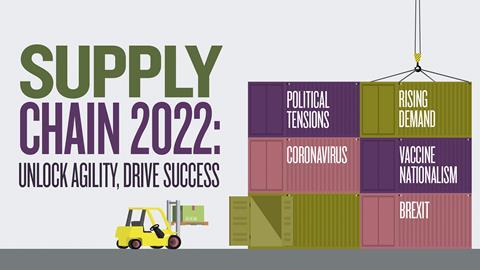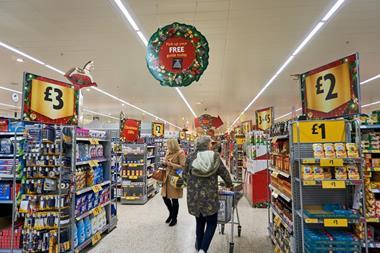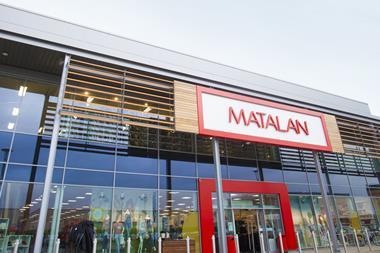Getting your data in order is paramount for avoiding supply chain issues, says Mark Holmes, senior advisor for supply chain at InterSystems.
Today’s consumer wants greater convenience, choice and speed, and those retailers that are unable to provide the right products at the right time are at a significant disadvantage.
Retailers need to find ways to turn the tide and keep up with changing consumer demands and expectations – something that is even more challenging due to supply chain problems caused by labour and driver shortages.
More effective use of data and complete visibility of their entire operations is vital to help retailers better cater to consumer demands.
Yet while retailers have no shortage of data, many of them struggle to centralise data into ‘one source of truth’ to gain the necessary accurate, real-time insights.
“Retailers need to digitally transform their infrastructure to meet consumer demand”
The root of this problem? Legacy systems and the inability to connect data silos across the entire ecosystem of trading partners and enterprise systems.
Although these problems aren’t new, issues like budget constraints, a lack of technological expertise and a sense of inertia have traditionally prevented retailers and consumer goods companies from doing anything about them.
To move forwards, retailers need to address these challenges by digitally transforming their infrastructure to ultimately be able to meet consumer demand.
Transform infrastructure
Retailers must be able to connect all internal and external data sources and gain access to that data in real time. This calls for the use of a control tower alongside a modern data management platform with a data fabric architecture to connect all sources and harmonise that data so that it’s normalised, accurate and accessible in real time.
This approach will also allow retailers to obtain end-to-end supply chain visibility, as well as access to advanced intelligence capabilities, such as machine learning (ML) and self-service analytics, to gain more actionable insights from their data.
Smart data fabrics – a new, modern type of architectural approach – accesses, transforms and harmonises data from multiple sources, on demand, with interoperability to make data usable and actionable for a wide variety of applications.
Advanced analytics capabilities embedded into this fabric also enable existing legacy applications and data to remain in place.
With budget constraints a consideration for many retailers, this use of technology allows retailers to maximise the value from their previous technology investments, rather than causing them to rip and replace.
Get smart about supply and demand
The capabilities enabled by this use of technology with embedded AI and ML allow for real-time visibility of stocking levels across the entire network.
Retailers could see up-to-the-minute stock levels both in stores at the shelf level and in warehouses to ensure they have the required quantities to meet customer demand at any given time with real-time alerting to any fulfilment issue.
This will help retailers cater to changing consumer demand and improve the customer experience.
By being able to combine real-time internal and external data into a cognitive smart data fabric platform, retailers will be positioned to react and adapt more quickly to changes to customer buying behaviour.
For example, if a retailer running product brand promotions across 1,500 stores during the week is seeing a customer buying behaviour change across 300 of the stores in three different countries, having an intelligent data platform can sense this demand shift and provide fulfilment options to existing systems to rebalance inventory and meet this new demand.
“Being able to pre-empt what customers need will improve customer experience and loyalty, and ultimately increase revenues”
In addition, a data platform with a smart data fabric can provide the ability for store managers to have a unified and accurate end-to-end view of their sales, inventory, orders and deliveries at scale while improving demand forecasting accuracy at the shelf level.
Being able to pre-empt what their customers need and ensure they are able to cater to that will improve customer experience and loyalty, and ultimately increase revenues.
As consumer behaviour continues to evolve, using technology to gain end-to-end supply chain visibility will ensure retailers have increased resilience and the agility to continue delivering the right products and services to their customers, even in the face of supply chain disruptions.
Read more
Retail Week’s Supply Chain 2022 report, produced in association with supply chain experts Bis Henderson Consulting, GreyOrange, Intersystems and Snowflake, provides the blueprint for retailers looking to sustain growth and achieve success in these new ways.
Access the report here today to:
- Finesse the first mile and navigate the warehouse space race
- Understand how to win the final mile – and whether rapid delivery is the be-all and end-all
- Future-proof your supply chain against the global backdrop
- Learn how to adopt sustainability into all aspects of your operations
- Discover the role of strategic alliances in making retail supply chains more resilient

Mark Holmes is senior advisor for supply chain at InterSystems






























